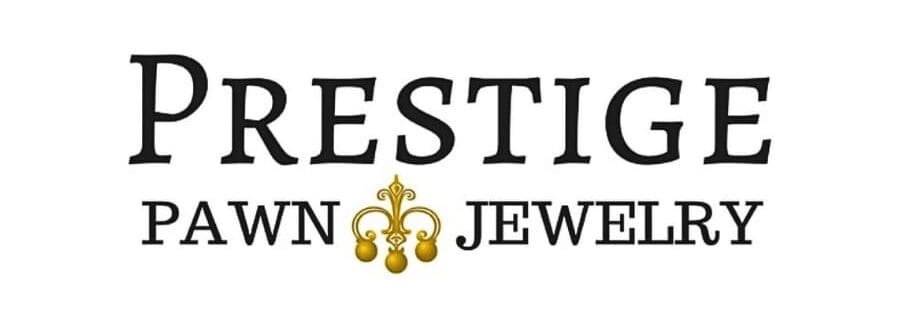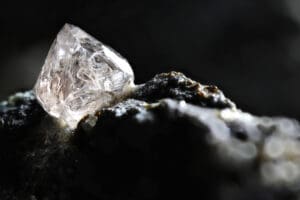Are Lab Diamonds Real Diamonds?
Let’s cut right to the chase: are lab diamonds real diamonds? Yes, technically they are created with the same mineral and chemical properties. Although is a lab created diamond the same as a natural diamond? No way! Natural diamonds are the oldest mineral in the universe. The solar system is about 4.5 billion years old. The allure of a natural diamond is that it is also this old.
Bold claims have been made about lab-grown diamonds – they’re touted as identical twins to those forged deep within Earth’s mantle millions of years ago. By the end of our exploration, you’ll understand why so many are turning heads away from these humanmade stones.
From understanding what earns a diamond its ‘real’ label to navigating through advanced technologies used in crafting them, we’ve got your back covered with crystal-clear insights. Are lab diamonds real diamonds? Stick around because this revelation might just redefine brilliance for you.
Table Of Contents:
- Are Lab Diamonds Real Diamonds? A Clear-Cut Answer
Unveiling the Truth: Are Lab-Grown Diamonds Real?
So, you’re eyeing that sparkle and wondering if lab created diamonds are real. Let’s clear up any confusion—these beauties are just glitzy bits of carbon copy; they don’t pack the same punch as their natural counterparts.
What Makes a Diamond ‘Real’?
A diamond earns its title through crystal-clear characteristics: hardness, brilliance, and structure. Whether we’re talking about laboratory grown diamonds or those plucked from the earth’s embrace, these gems strut identical physical and chemical properties but not age or creation. We’ve got industry heavyweights like the Federal Trade Commission, backing this up by saying cultured can be used in connection with lab grown diamonds as long as it is “immediately accompanied, with equal conspicuousness” by one of the following terms: laboratory-created, laboratory-grown, [manufacturer name]-created, or by some other word or phrase of “like meaning.”
The Science Behind Lab-Grown Diamonds
So what’s the deal with these glittering newcomers? They’re called lab-grown diamonds and they’ve been shaking up the diamond industry.
Replicating Earth’s Mantle Conditions
In nature, diamonds form deep within the Earth under extreme heat and pressure—think Mother Nature working her magic over about 1 to 4.5 billion years. Diamond labs use two main methods to mimic these intense conditions: High Pressure-High Temperature (HPHT) and Chemical Vapor Deposition (CVD). With HPHT, manufacturers start with a diamond seed placed into carbon before it’s exposed to temperatures around 1400°C and pressures approximately 1.5 million pounds per square inch—talk about feeling stressed out.
Meanwhile, CVD takes a more laid-back approach but still brings on some serious science. A chamber is filled with carbon-rich gas; then lasers or microwaves crank up the heat until carbon atoms rain down onto those tiny diamond seeds, layer by layer.
Distinguishing Lab Grown from Mined Diamonds
Imagine two diamonds: one forged over billions of years beneath the Earth’s crust, the other lab grown. Both sparkle with an undeniable allure, but can you tell which is which? Advances in technology have blurred the lines between natural and lab grown stones, sparking intrigue within both the diamond industry and among shoppers hunting for that dream ring.
Advanced Testing Techniques
Various tests conducted by gemological institutes involve high-tech equipment designed to detect minute differences between a mined natural diamond and created diamonds. These labs scrutinize characteristics like growth patterns and trace elements; nuances invisible to all but their trained eyes or sophisticated machines. It’s here that distinctions emerge—features such as laser inscription on many lab-grown gems reveal their modern birthright.
To dig deeper into these scientific mysteries without donning your own white coat, check out resources provided by the Gemological Institute of America (GIA), where detailed reports shed light on this intricate process.
Visual Differences to the Naked Eye
This likeness has led organizations like the Federal Trade Commission (FTC) to pass guidelines ensuring transparency when it comes to labeling these lab created diamonds. After all, knowledge about whether your stone was naturally mined or produced in controlled environments should be clear cut.
A final note worth considering amidst this sparkling debate revolves around value—not just monetary but also sentimental significance tied up in personal preference. While some may treasure natural diamonds for their ancient heritage others find beauty in saving money with short cuts
Important Takeaway: Lab diamonds and mined diamonds may look the same, but advanced testing can reveal their origins. While it’s tough to tell them apart with the naked eye, scientific techniques like examining growth patterns do the trick.
Cost Comparison Between Lab Grown and Natural Diamonds
Diamonds might be a girl’s best friend, but your wallet probably has another opinion. When it comes to buying that dream ring, whether it’s for an engagement or just because you love some sparkle, the price tag can often cause more gasps than the diamond’s brilliance. That’s where lab grown diamonds come into play as a more affordable option.
Understanding Diamond Pricing Factors
But wait—why exactly does nature ask for such high numbers? Well folks, think about what goes into extracting these sparklers from deep within our Earth—a whole lot of time-consuming work plus some exceedingly rare circumstances need align perfectly make each natural stone possible; rarity equals higher costs period. And there’s romance behind having something so ancient. Some people cherish the thought of holding onto piece of the planet’s history while others prioritize practicality budget-friendly approach neither wrong. Keep in mind the real asset will retain value longer term compared to the newer laboratory siblings who haven’t been around block nearly long enough establish themselves solid investments. In fact lab grown diamond prices has been rapidly declining so your purchase may have already lost its value.
Conclusion
So, are lab diamonds real diamonds? Yes, technically they are created with the same mineral and chemical process. The created is the key here. Was your diamond created by the earths natural processes or in a laboratory?
Weigh your options, and it becomes clear: choosing lab-grown could save cash but don’t expect it to be an investment.
Don’t wait any longer – take the next step and visit Prestige Pawn & Jewelry today! Our experts are here to assist you with your pawn, buying, and selling needs. Experience the prestige and exceptional service that sets us apart. Contact us now or visit our store to begin your journey into the world of luxury and value.
You may also like: Diamonds: Dive Into Earth’s Treasures


